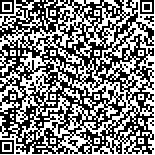| 引用本文: |
王平,马元荣,张会敏.基于网络药理学及体内外实验研究连翘不同提取液抗RSV作用[J].湖南中医药大学学报,2022,42(7):1121-1128[点击复制] |
|
| |
|
|
| 本文已被:浏览 2122次 下载 701次 |
| 基于网络药理学及体内外实验研究连翘不同提取液抗RSV作用 |
| 王平,马元荣,张会敏 |
| (山东省中医药研究院, 山东 济南 250014;天津大学精密测试技术及仪器国家重点实验室, 天津 300072;山东省济南市长清区平安街道社区卫生服务中心, 山东 济南 250300) |
| 摘要: |
| 目的 探讨连翘不同提取液体内外抑制呼吸道合胞病毒(respiratory syncytial virus,RSV)的药理效果。方法 运用网络药理学,预测连翘抗RSV作用的具体成分以及可能的作用通路。采用细胞病变效应结合MTT法,评价连翘不同提取液对RSV的抑制活性。鼻腔接种法建立RSV感染小鼠模型,随机分为6组,每组10只。正常组和模型组给予等体积的生理盐水;利巴韦林组给予利巴韦林溶液(4 mg/mL);高剂量组、中剂量组、低剂量组分别给予连翘煎煮离心液4、2、1 g/kg。连续给药5 d后,检测血常规、肺指数,HE染色法观察肺组织的病理变化,免疫组化法检测TLR4、NF-κB p65及p38 MAPK的表达水平。结果 获取21个潜在活性成分,抗RSV作用靶点129个,富集548个生物过程及112条信号通路,涉及癌症中的蛋白多糖、HIF-1信号通路、TNF信号通路等。体外实验显示,连翘不同提取液对RSV感染的A549细胞有不同程度的抑制作用,抑制效果较强的是连翘煎煮离心液。体内实验显示,与正常组相比,模型组白细胞(white blood cell,WBC)、淋巴细胞(lymphocyte,LYM)、单核细胞(mononcyte,MON)计数及肺指数显著升高(P<0.05),中性粒细胞(neutrophil,NEU)计数下降(P<0.05);与模型组相比,利巴韦林组、高剂量组、中剂量组、低剂量组WBC、LYM、MON计数明显下降(P<0.05),NEU计数升高(P<0.05),肺指数显著下降(P<0.05);与利巴韦林组相比,中剂量组、低剂量组WBC、LYM、MON计数升高(P<0.05),NEU计数下降(P<0.05),高剂量组WBC、LYM计数升高(P<0.05),高剂量组、中剂量组、低剂量组肺指数升高(P<0.05);与高剂量组相比,低剂量组WBC、LYM计数升高(P<0.05),NEU计数下降(P<0.05)。HE染色显示模型组肺组织增生,大量炎性细胞浸润,利巴韦林组、低剂量组、中剂量组、高剂量组肺组织病理损伤得到明显改善。与正常组相比,模型组TLR4、NF-κB p65、p38 MAPK平均光密度值升高(P<0.05);与模型组相比,利巴韦林组、高剂量组TLR4、p38 MAPK及NF-κB p65平均光密度值下降(P<0.05),中剂量组TLR4、p38 MAPK平均光密度值下降(P<0.05)。结论 连翘通过多成分、多靶点、多通路发挥抗RSV作用。在体外,连翘不同提取液对RSV均有抑制效果,在体内,连翘煎煮离心液对RSV引起的肺炎有明显治疗作用。 |
| 关键词: 连翘 网络药理学 呼吸道合胞病毒 抗病毒 信号通路 实验验证 |
| DOI:10.3969/j.issn.1674-070X.2022.07.011 |
| 投稿时间:2021-08-10 |
| 基金项目:山东省重大科技创新工程项目(2018CXGC1310,2020CXGC010505-04);山东省高校中药质量控制与全产业链建设协同创新中心项目(CYLXTCX2020-04);山东省自然科学基金项目(ZR2020MH386,ZR2019MH134);国家重点研发计划项目(2019YFE0117800);泰山学者项目(ts201511074)。 |
|
| Anti-RSV effect of different extracts of Forsythia suspensa based on network pharmacology and in vitro and in vivo experiments |
| WANG Ping,MA Yuanrong,ZHANG Huimin |
| (Shandong Institute of Traditional Chinese Medicine, Jinan, Shandong 250014, China;State Key Laboratory of Precision Testing Technology and Instruments of Tianjin University, Tianjin 300072, China;Ping'an Street Community Health Service Center, Changqing District, Jinan City, Shandong Province, Jinan, Shandong 250300, China) |
| Abstract: |
| Objective To investigate the pharmacological effects of different extracts of Forsythia suspensa on inhibiting respiratory syncytial virus (RSV) in vitro and in vivo. Methods The specific components and possible pathways of Forsythia suspensa anti-RSV were predicted by network pharmacology. The inhibitory activity of different extracts of Forsythia suspensa on RSV was evaluated by cytopathic effect combined with MTT method. The infection model of RSV was established by nasal inoculation, they were randomly divided into six groups, with 10 rats in each group. Normal group and model group were given an equal volume of normal saline; ribavirin group was given ribavirin solution (4 mg/mL); the high-dose, middle-dose and low-dose groups of Forsythia suspensa were given the decoction centrifugal liquid of Forsythia suspensa (4, 2, 1 g/kg). After 5 d of continuous administration, blood routine and lung index were measured; the pathological changes of lung tissue was observed by HE staining method; the expression levels of TLR4, NF-κB p65 and p38 MAPK were detected by immunohistochemistry. Results A total of 21 potential active components were obtained, involving 129 key anti-RSV targets, which were enriched in 548 biological processes and 112 signaling pathways, including proteoglycans in cancer, HIF-1 singaling pathway, TNF singaling pathway etc. In vitro experiments showed that different extracts of Forsythia suspensa had different degrees of inhibition on RSV infected A549 cells, and the decoction centrifugal liquid of Forsythia suspensa had stronger inhibition effect. In vivo experiments showed, compared with the normal group, the white blood cell (WBC), lymphocyte (LYM), monocyte (MON) count and lung index in the model group were significantly increased (P<0.05), neutrophil (NEU) count was decreased (P<0.05); compared with the model group, the WBC, LYM, and MON count of ribavirin group, high-dose group, middle-dose group, and low-dose group were significantly decreased (P<0.05), while the NEU count was increased (P<0.05), the lung index was significantly decreased (P<0.05); compared with the ribavirin group, WBC, LYM, and MON count were increased in the middle-dose group and low-dose group, while NEU count was decreased (P<0.05), WBC and LYM count were increased in the high-dose group (P<0.05), the lung index of high-dose group, middle-dose group and low-dose group was increased (P<0.05); compared with the high-dose group, the WBC and LYM count increased (P<0.05), and the NEU count was decreased in the low-dose group (P<0.05). HE staining showed that tissue of the lung in the model group proliferated and a large number of inflammatory cells infiltrated, the pathological damage of the lung tissue in the ribavirin group, the low-dose group, the middle-dose group and the high-dose group was significantly improved. Compared with the normal group, the average optical density of TLR4, NF-κB p65, and p38 MAPK in the model group were increased (P<0.05); compared with the model group, the average optical density of TLR4, p38 MAPK and NF-κB p65 in the ribavirin group and the high-dose group were decreased (P<0.05), and the average optical density of TLR4 and p38 MAPK in the middle-dose group were decreased (P<0.05). Conclusion Forsythia suspensa plays an anti-RSV role through multi-ingredients, multi-target and multi-channel, the different extracts of Forsythia suspensa can inhibit RSV in vitro, and the decoction centrifugal liquid of Forsythia suspensa has obvious treatment effect on pneumonia caused by RSV in vivo. |
| Key words: Forsythia suspensa network pharmacology respiratory syncytial virus anti-virus signaling pathway experimental test |
|

二维码(扫一下试试看!) |
|
|
|
|




